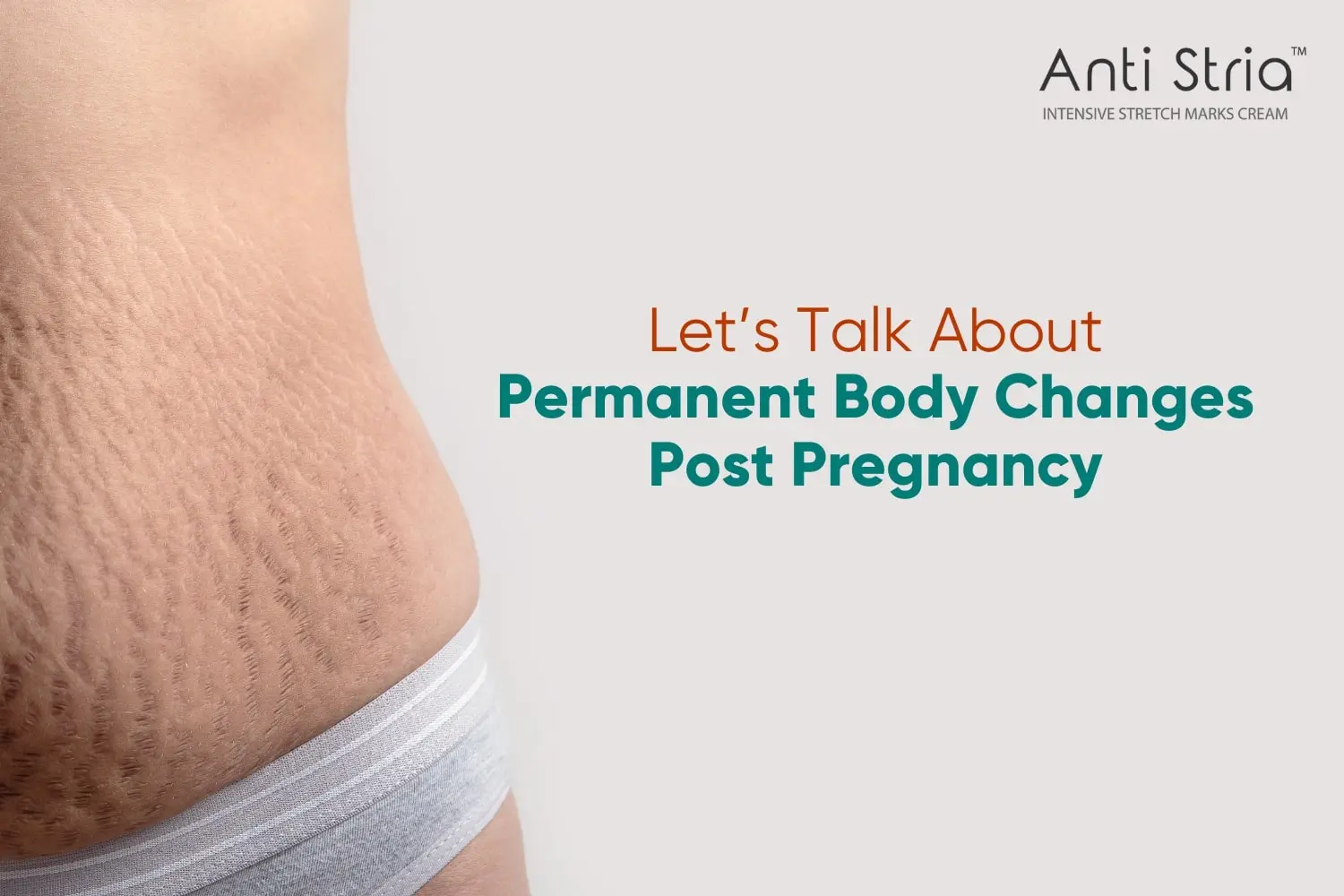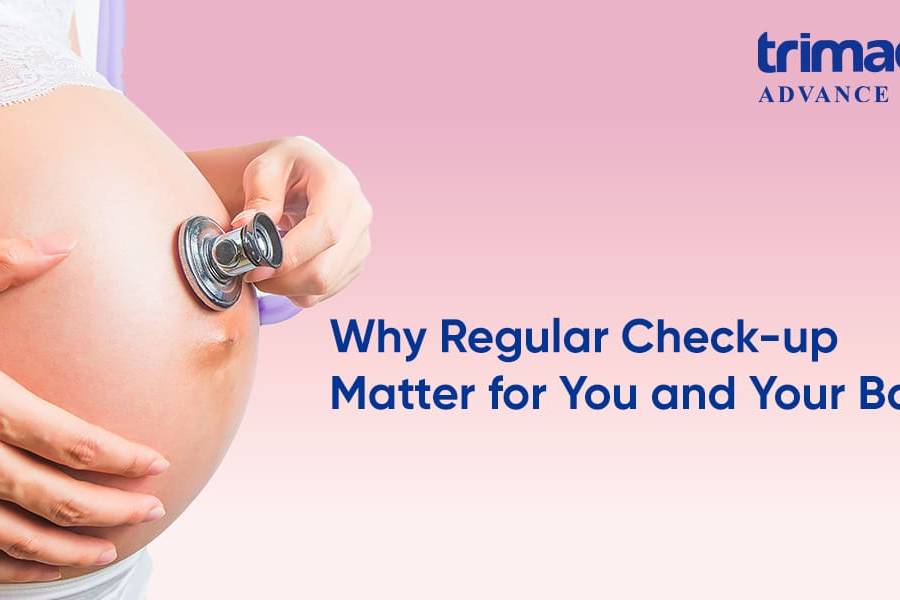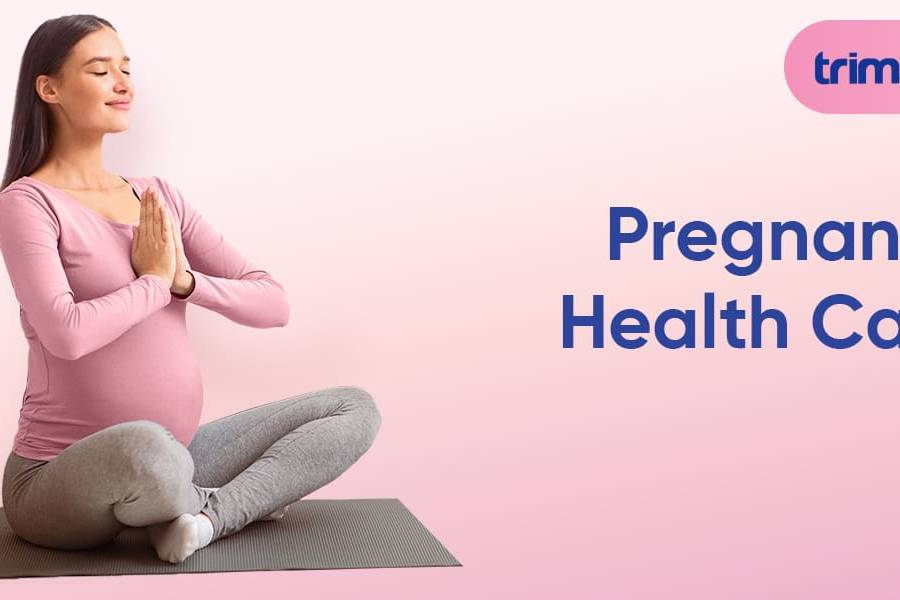Being a mother is a journey of tremendous joy and change. When the little bundle of joy finally arrives, the whole experience can be nothing short of magical; however, this little bundle often leaves a woman with permanent changes to her body. Pregnancy is beautiful, and complex, and leaves its mark on the emotional and physical levels.
In this blog post, we will explore the world of post-pregnancy changes, bringing to light eight common long-term alterations that many mothers experience. From shifts in skin elasticity to the evolution of body shape to developing stretch marks, understanding these changes is the first step toward embracing the beauty of the postpartum body.
One of the most common changes in a woman’s body post-pregnancy is stretch marks. Stretch marks after pregnancy are common issues in 90% of postpartum mothers. These stretch marks appear during pregnancy due to rapid skin elasticity and rapid weight gain due to hormonal changes during pregnancy. Post-childbirth, the body undergoes significant changes, including skin, muscles, hormones, and internal organs, which may take time to recover.
Thus, postpartum care is crucial for mothers’ well-being, especially when addressing stretch marks. Post-pregnancy stretch mark cream helps in healing, fading, and nourishing the skin.
Stretch mark cream after pregnancy may improve the skin condition and decrease stretch marks; however, they vary in their effectiveness depending on the skin type, severity, and consistency of application. Anti Stria post pregnancy stretch marks cream hydrates, nourishes, improves elasticity and is soothing.
EIGHT COMMON PERMANENT BODY CHANGES EXPERIENCED DURING PREGNANCY
Pregnancy causes permanent changes in the body, including physical and hormonal changes. The abdominal region stretches considerably to allow for the growing baby, causing stretch marks after pregnancy and changing the texture of the skin.
Breasts swell and change for lactation, which is the miraculous process of creating life and reminding people of the profound experience of bringing a new life into the world.
Here are eight common permanent body changes that women may experience after pregnancy:
- Stretch marks: Postpartum stretch marks, usually red or purple, appear in the abdomen, breasts, hips, and thighs because of skin stretch during pregnancy. Caused by hormones, genetics, and weight gain, the stretch marks disappear within a year.
- Changes in breast size and shape: Pregnancy and breastfeeding affect the size and shape of breasts dramatically, such that post-partum, larger, softer, or slightly droopy breasts result from the ligament and skin stretching.
- Abdominal muscle separation: An expanding uterus often causes abdominal muscles to separate during pregnancy, so that this midsection bulge may not correct itself after a pregnancy. In fact, most women experience at least some abdominal muscle separation; it is quite common and persistent post-childbirth.
- Pelvic floor changes: These activities may weaken pelvic floor muscles to the point of causing issues like urinary incontinence or prolapse of pelvic organs, and this may turn out permanent unless the right exercises or treatment are done. Exercises such as Kegels will alleviate pelvic floor issues, but permanent changes occur without proper care or treatment.
- Changes in foot size: Some women gain foot size or have a changed foot shape from the relaxation of ligaments that occurs during pregnancy.
- Loose belly skin: Separation due to late pregnancy, with about a third to two-thirds of postpartum women retaining it. Recovery takes place through a healthy diet, water intake, and moderate exercise, following doctors’ prescriptions.
- Hair fall: Hormonal fluctuations during pregnancy cause hair thinning or loss, with hair loss potentially remaining up to a third, but high hormone levels during the nine-month pregnancy stimulate growth.
- Vaginal discharge: After childbirth, vaginal bleeding, and discharge, also known as lochia, are common. Lochia is a thick, dark red discharge made up of extra blood, mucus, and uterine tissue. It may appear as a heavy period with blood clots. The bleeding slows down around the fourth day and fades over four to six weeks.
- Changes in body shape and metabolism: Though some women regain the original shape and weight before pregnancy, others may not due to physiological changes in metabolism, body composition, and redistribution of fat.
ROLE OF POST-PREGNANCY STRETCH MARK CREAMS IN ADDRESSING STRETCH MARKS
Postpartum stretch mark creams are widely used by women to address the huge changes that bodies undergo during pregnancy, mitigating the appearance of those marks. Post-pregnancy stretch mark creams with skin-nourishing ingredients such as cocoa butter, shea butter, vitamin E, hyaluronic acid, collagen, or retinoids hydrate, improve elasticity, and may reduce the appearance of stretch marks.
Stretch mark cream after pregnancy can improve skin conditions and reduce stretch marks, but their effectiveness varies based on skin type, severity, and application consistency. Regular use, especially during early stretch marks after pregnancy, may yield better results.
Consult a doctor before using post-pregnancy skincare products, especially for breastfeeding mothers, to ensure safety and choose the most suitable postpartum stretch mark cream options. Use only after consulting a doctor; the same is required for breastfeeding mothers to be assured of their safety and choose the post-pregnancy stretch mark cream options available.
ANTI STRIA – IDEAL POST-PREGNANCY STRETCH MARKS CREAM
Anti Stria, a pregnancy stretch marks cream, with essential ingredients, is dermatologically tested, safe, and effective for postpartum care. ANTI STRIA, a post-pregnancy stretch mark cream is free from Retin-A, parabens, and artificial fragrances, and is suitable for use during pregnancy, post-pregnancy, or after delivery.
ANTI STRIA Stretch Marks Removal Cream contains Lactic Acid, a collagen-boosting ingredient and enhances skin elasticity, promoting a youthful and firm appearance. ANTI STRIA is a scientifically formulated stretch marks treatment cream that reduces and prevents stretch marks with a daily application. The primary ingredient Lactic Acid stimulates collagen in the skin, hence enhancing its elasticity and providing it with a younger look.
Frequently Asked Questions:
- What are common long-term body changes after pregnancy?
The following are some common long-term body changes after pregnancy: stretched abdominal muscles, wider hips, changed breast size and shape, stretch marks, and changed vaginal elasticity.
- What can be done about the stretched abdominal muscles post-pregnancy?
With the care of a doctor, stretches to the abdominal muscles may be considered using exercises like pelvic tilts, abdominal bracing, and strengthening of the core.
- Can the visibility of stretch marks be minimized after delivery?
Stretch marks may not be removed permanently, but some treatments that can make them less noticeable are microdermabrasion, topical creams, and laser therapy.
- Do my hips shrink back into my pregnancy frame after delivery?
Due to childbirth’s effects on the pelvic bones, the hips tend to remain wider after pregnancy; though some may see a reduction in the size of their hips.
A Certified Nutritionist with a rich healthcare background in health journalism, the author has immense experience in curating reader-friendly, engaging, and informative healthcare blogs to empower readers to make informed pregnancy-related decisions.













